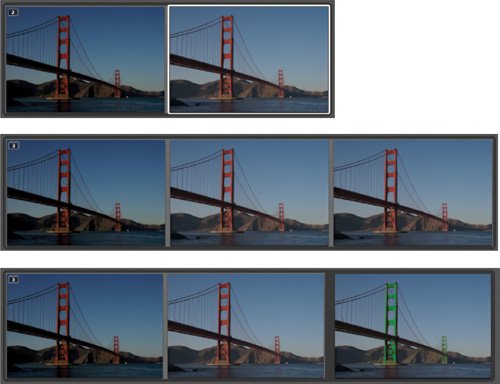Understanding The Round Trip
| When you invoke the Open with External Editor command, a few things happen. It's important to understand what Aperture is doing in the background so that you can more intelligently organize your editing tasks. Note You can select multiple images and then choose Open with External Editor. Aperture will pass all of the selected images to your editor. The behavior described in this chapter is the same whether you select single or multiple images. When you choose Open with External Editor, Aperture's goal is to pass a document to your editor of choice. However, because of Aperture's master/version scheme, there may not actually be a document ready that it can send to another application. Remember: in Aperture, any image that you see in the library is actually a master data file combined on the fly with a list of edits, so before Aperture can have a document to send to another editor, it must render a new image file. In other words, it must apply the adjustments that you've specified to your master image and write a new file in the file format that you chose in the Preferences dialog box. It is this new file that is sent to your external image editor (Figure 7.2). Figure 7.2. When you select a document in Aperture and then choose Open with External Editor, the version you selected is combined with its original raw file to produce a new file in the format that you specified in Aperture's preferences dialog box. That new file is then opened in your external editor. The new file that is created is a master image; it's not simply a version document. The new file is placed in a stack with the image you originally selected. If that image was already in a stack, the new file is added to that stack (Figure 7.3). Figure 7.3. The top part of the figure shows a stack containing the original image and an additional version that has had some corrections made. When you select the edited version and execute the Open with External Editor command, a new file (middle) is created from the selected version and then passed to Photoshop. After saving, the new version (bottom) shows the edits made in Photoshop. As you learned in Chapter 3, your Aperture library is really just a folder on your hard drive. Selecting an image in Aperture and then choosing Open with External Editor is analogous to double-clicking an image in a folder. The image opens in your editor, and when you choose Save in your editor, the image is automatically saved back in your original file. So after you launch an image in an external editor from Aperture, choosing Save from that editor simply saves into the file that's in your library. When you return to Aperture, the image thumbnail should update to show your changes. |
